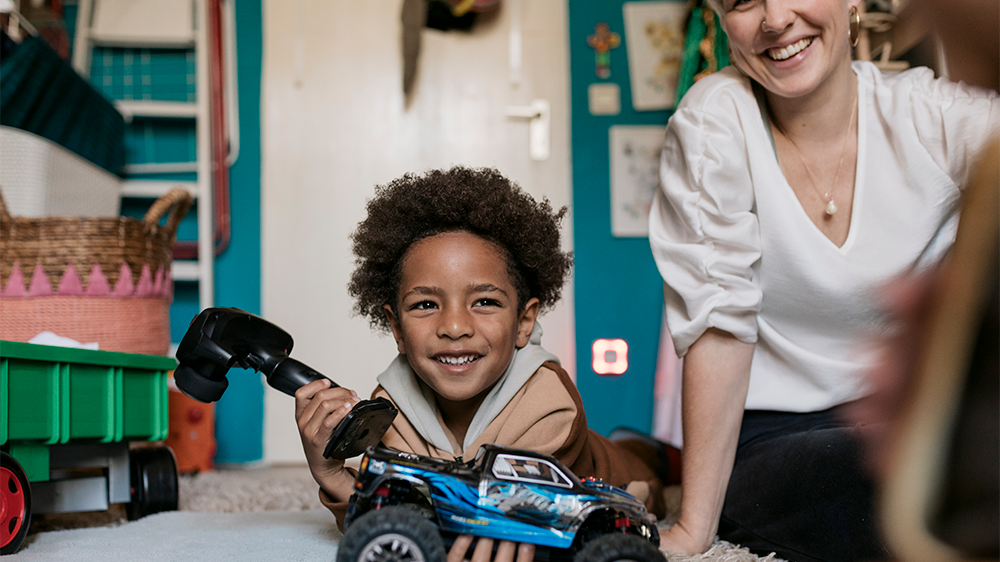Overview: Tiny batteries pose big risks if your child swallows them. Learn the dangers of small batteries, called button batteries, if swallowed or put in the nose or ears. Childproof your home with these battery safety tips.
Tiny, silver-colored batteries, called button batteries, are used all around your home, from flameless candles, remote controls and garage door openers to your child’s favorite toys. Did you know if they find their way into your little one’s mouth, they can cause choking or burn their throat?
According to the National Safety Council, every year more than 2,800 kids receive emergency care after swallowing button batteries, or one child every three hours. In fact, the number of serious injuries or deaths caused by button batteries has increased nine-fold in the last decade.
Here are important tips for parents to know about battery safety from the experts at MercyOne Children's Hospital.
Why are batteries so dangerous for children?
While button batteries are something you use every day, they can still be hazardous. These coin-sized lithium batteries can get stuck in your child’s esophagus, nose or ears causing burns and injuries. If the battery isn’t removed within two hours, the damage can be life-threatening.
Batteries contain heavy metals such as:
- Zinc
- Mercury
- Silver
- Nickel
- Cadmium
- Lithium
If a battery is ingested, saliva triggers an electrical current causing a chemical reaction that can severely burn the throat and cause tissue damage. Treating the damage is painful and can require feeding tubes, breathing tubes and possibly surgery. Button batteries can also cause permanent injury if put in the nose or ears. Hearing aid batteries are a common culprit.
What to do if your child swallows or ingests a battery
If your child swallows a button battery or lodges it in their ear or nose, call 911 immediately or go to the nearest emergency department.
Time is critical. Medical care is needed as fast as possible to prevent life-threatening burns and injuries.
Parents and caretakers may have a hard time figuring out what's wrong with a young child who doesn't know the word for “battery.” In that situation, ask siblings or others around if they saw the child put anything in their mouth or what they have been playing with. If in doubt, follow the steps below.
- Seek emergency care immediately.
- Do not let your child eat or drink anything until after an X-ray.
- In most cases, an x-ray must be obtained right away to make sure the battery has gone through the esophagus into the stomach. Most button batteries pass through the stool.
- Do not induce vomiting or eat or drink until an x-ray confirms the battery has traveled beyond the esophagus.
- If lodged in the nose or ears, do not use nose or ear drops until the child has been examined by your provider. These fluids can cause additional injury.
How to childproof your home for button battery safety
Here’s how you can protect your child by practicing battery safety:
- Put duct tape over the battery compartments or choose products that only open with screwdriver or special tool.
- Keep batteries locked up, out of sight and reach from children.
- Discard or recycle old batteries where children can’t find them.
- Show extra caution with penny-sized lithium-ion batteries.
Review the list of common household battery-powered items and make aware any caregivers, friends, family m embers and sitters of these safety tips.
Add these numbers into your smartphone contacts or put them on display for caregivers: National Poison Center Hotline (1-800-222-1222) and National Battery Ingestion Hotline (1-800-498-8666) into your contacts and put on display for caretakers.
Stay connected to your child's health with MyChart.
This blog was medically reviewed by a MercyOne provider.

